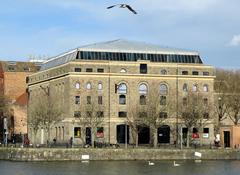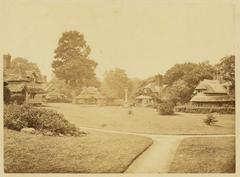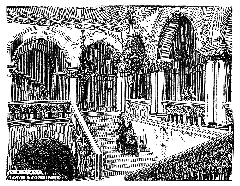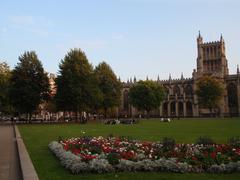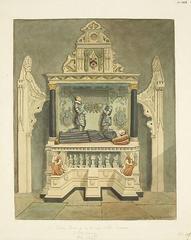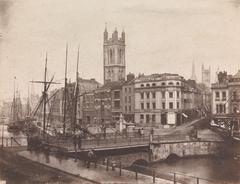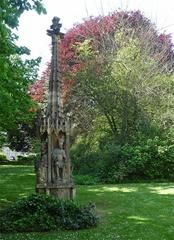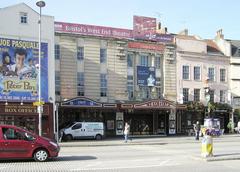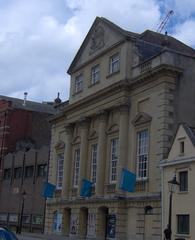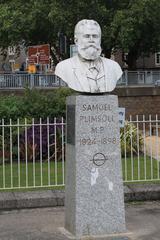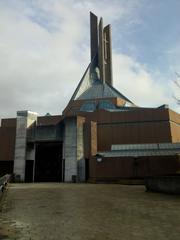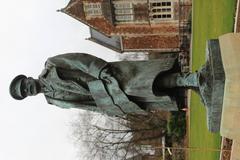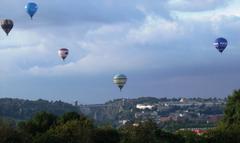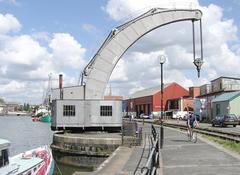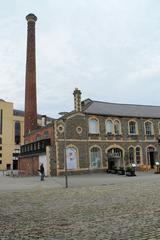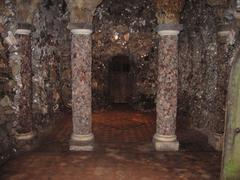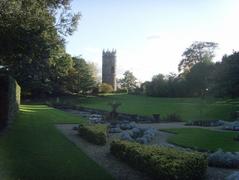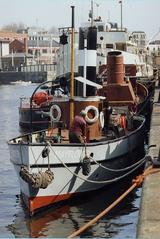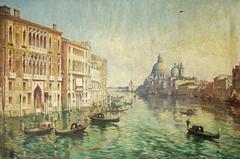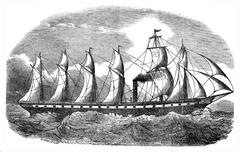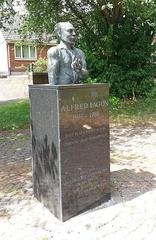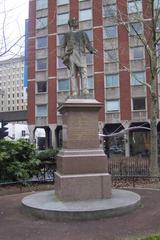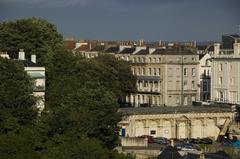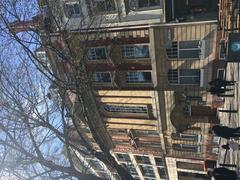
Red Lodge Museum Bristol: Visiting Hours, Tickets, and Historical Sites Guide
Date: 04/07/2025
Introduction
Situated in the heart of Bristol, the Red Lodge Museum is a remarkable historical landmark offering an immersive journey through over four centuries of English history, art, and architecture. Originally commissioned in the late 16th century by Sir John Young and Dame Joan, the building has witnessed transformations through the Tudor, Georgian, and Victorian eras. Renowned for its iconic Great Oak Room—Bristol’s last complete Elizabethan room—and the rare Elizabethan Knot Garden, the Red Lodge also embodies a rich social history, notably serving as a pioneering girls’ reform school under Mary Carpenter in the 19th century.
Today, the Red Lodge Museum stands as both an architectural treasure and a testament to the city’s evolving cultural landscape. Visitors can explore its period rooms, gardens, and special exhibitions, while engaging with Bristol’s heritage through guided tours and educational programs. However, the museum currently faces significant financial challenges, with proposed council budget cuts threatening its future—a topic that has sparked widespread public concern.
This guide provides comprehensive visitor information, including opening hours, ticketing, accessibility, travel tips, and details on the museum’s historical significance. Whether you’re a history enthusiast, architecture lover, or first-time visitor, the Red Lodge Museum promises an unforgettable cultural experience.
Contents
- Discover the Red Lodge Museum: A Must-Visit Historical Site in Bristol
- Historical Overview
- Origins and Early Construction (16th Century)
- Georgian Transformation (18th Century)
- Victorian Era and Educational Role (19th Century)
- Architectural and Artistic Highlights
- The Knot Garden: A Living Link to the Past
- Social and Cultural Significance
- Visiting the Red Lodge Museum
- Opening Hours and Admission
- Tickets and Guided Tours
- Accessibility
- Travel Tips and Parking
- Special Events and Educational Programs
- Visual and Virtual Resources
- Related Attractions in Bristol
- Frequently Asked Questions (FAQ)
- Current Challenges and Future Prospects
- Financial Pressures and Threat of Closure
- Community and Sector Response
- Impact on Heritage and Education
- Alternative Solutions
- Broader Context: National Trends and Cultural Policy
- Visitor Experience: What to See and Do
- Historic Rooms and Period Furnishings
- The Elizabethan Knot Garden
- Educational and Family Activities
- Art and Collections
- Facilities and Amenities
- Visitor Tips for a Memorable Experience
- Call to Action
Discover the Red Lodge Museum: A Must-Visit Historical Site in Bristol
The Red Lodge Museum offers a unique window into Bristol’s history, combining architectural splendor with stories of social change. With its central location, the museum is easily accessible for those interested in exploring the city’s heritage.
Historical Overview
Origins and Early Construction (16th Century)
Commissioned between 1578 and 1580 by Sir John Young and Dame Joan, the Red Lodge was originally built as an Elizabethan guesthouse on the site of a former Carmelite Priory. The initial structure consisted of three principal rooms, including the celebrated Great Oak Room, renowned for its intricate wood paneling and rich Elizabethan decor. These features reflect the prosperity and status of its first owners (England Rover).
Georgian Transformation (18th Century)
During the 1720s, the Red Lodge was expanded with a new Georgian wing, doubling its size and introducing refined architectural elements, such as a grand staircase and elegant sash windows. The Georgian rooms, including the Print Room and the Mary Carpenter Room, are characterized by their symmetry and classical detailing, providing a striking contrast to the ornate Elizabethan interiors (England Rover).
Victorian Era and Educational Role (19th Century)
In 1854, social reformer Mary Carpenter established a pioneering girls’ reformatory school at the Red Lodge, marking a significant chapter in the building’s history. The Victorian School room, with its period desks and educational artifacts, offers insight into the progressive educational practices of the time, especially for girls and disadvantaged youth (England Rover).
Architectural and Artistic Highlights
The Red Lodge Museum is a showcase of architectural evolution, with its Elizabethan Great Oak Room standing out for its ornate wood paneling, carved fireplaces, and decorative plasterwork. The Georgian rooms introduce a sense of lightness and elegance, while the Victorian schoolroom highlights the building’s adaptive use. The museum also houses what may be the UK’s oldest portrait of a slave, offering poignant social and historical context (England Rover).
The Knot Garden: A Living Link to the Past
Restored in the 1980s, the Elizabethan Knot Garden at the Red Lodge is a meticulously designed outdoor space featuring geometric patterns of box hedges, aromatic herbs, and flowers. Inspired by 17th-century garden design, it serves not only as a beautiful retreat but also as an educational resource on historical horticulture (England Rover).
Social and Cultural Significance
The Red Lodge Museum mirrors Bristol’s social and cultural evolution—from an Elizabethan retreat and Georgian townhouse to a center for social reform. Its collections and period rooms provide a lens into Bristol’s diverse history, making it a vital space for reflection, learning, and dialogue (England Rover).
Visiting the Red Lodge Museum
Opening Hours and Admission
-
Standard Hours:
Tuesday to Sunday: 11:00 AM – 5:00 PM
Closed on Mondays and public holidays
(Check the official website for seasonal updates.) -
Admission:
Free entry. Donations are welcomed to support the museum’s maintenance and programs.
Tickets and Guided Tours
No advance booking is required for individual visits. Guided tours are offered on select days, providing in-depth insights into the building’s architecture and history. For group tours or educational visits, prior arrangement is recommended.
Accessibility
Due to the building’s historic nature, full wheelchair access is not available, and there are narrow staircases and uneven floors. Assistance dogs are welcome. For accessibility concerns, visitors are encouraged to contact the museum in advance (WhichMuseum).
Travel Tips and Parking
- Address: Park Row, Bristol BS1 5LJ, United Kingdom
- Public Transport: The museum is a short walk from Bristol Bus Station and Temple Meads railway station. Local bus routes stop nearby on Park Row and Park Street.
- Parking: No dedicated parking. Use nearby public car parks or city centre parking facilities. On-street parking is limited (Atlas Obscura).
Special Events and Educational Programs
Regular workshops, family-friendly activities, and special exhibitions are held throughout the year, especially during school holidays. Check the events page for current offerings.
Visual and Virtual Resources
- High-quality images and virtual tours are available on the museum’s official website and Art UK collection page.
- Interactive maps and digital resources enhance your pre-visit planning.
Related Attractions in Bristol
- Georgian House Museum
- M Shed Museum
- Bristol Cathedral, Brandon Hill, and Cabot Tower are within walking distance.
Visitor Experience: What to See and Do
Historic Rooms and Period Furnishings
- Great Oak Room: The museum’s highlight, featuring original Tudor oak panelling and an ornate plasterwork ceiling (Atlas Obscura).
- Other Period Rooms: Each room is furnished to reflect its era, from Elizabethan grandeur to Georgian refinement.
- Victorian Schoolroom: Offers a window into the building’s educational legacy.
The Elizabethan Knot Garden
A tranquil, walled garden at the rear of the museum, designed in period style and best enjoyed in fine weather.
Educational and Family Activities
Hands-on history sessions, themed workshops, and special exhibitions are offered regularly. These cater to all ages and deepen engagement with the site’s history.
Art and Collections
The museum’s collection includes period furniture, paintings, and decorative arts, much of which is catalogued online (Art UK).
Facilities and Amenities
- Restrooms: Basic facilities available.
- Gift Shop: Small shop with souvenirs and books.
- No Café: Nearby cafés and restaurants are accessible on Park Street.
- Photography: Non-flash photography is permitted for personal use.
Visitor Tips for a Memorable Experience
- Wear comfortable footwear—there are stairs and uneven floors.
- Allocate 45–90 minutes for your visit.
- Combine with nearby attractions for a full cultural day out.
- Check for special events before your visit.
- Contact the museum for group bookings or accessibility questions.
Current Challenges and Future Prospects
Financial Pressures and Threat of Closure
Facing a significant council budget shortfall, the Red Lodge Museum is at risk of closure, with proposals to shut it and other local museums to save funds (LocalGov; Bristol Post). The projected savings, however, are considered minimal compared to the cultural loss.
Community and Sector Response
There is strong public and sector opposition to closure plans, with campaigns, petitions, and public consultations voicing the museum’s educational and cultural importance (Museums Association).
Impact on Heritage and Education
Closure would impact access for school groups, researchers, and the public, diminishing Bristol’s cultural landscape and educational resources (WhichMuseum).
Alternative Solutions
Suggestions include introducing admission fees, seeking alternative funding, and community partnerships, though these present their own challenges (Bristol Post).
National Trends and Cultural Policy
The Red Lodge’s situation echoes broader national challenges, with UK museums facing austerity and rising operational costs. Collaborative funding and advocacy are increasingly vital (Museums Association).
Frequently Asked Questions (FAQ)
Q: What are the Red Lodge Museum opening hours?
A: Tuesday to Sunday, 11:00 AM to 5:00 PM (April–October); closed Mondays. Confirm on the official website before visiting.
Q: Is admission free?
A: Yes, but donations are welcomed.
Q: Is the museum wheelchair accessible?
A: Due to historic architecture, there is no wheelchair access and stairs are present.
Q: Are guided tours available?
A: Offered on select days and for groups by arrangement.
Q: Can I take photos inside?
A: Non-flash photography is permitted for personal use.
Q: Where is the Red Lodge Museum located?
A: Park Row, Bristol BS1 5LJ. Accessible via public transport.
Call to Action
Support the Red Lodge Museum by planning your visit, donating, or participating in community advocacy. For current hours, events, and updates on the museum’s future, visit the Bristol Museums Official Website. Download the Audiala app for curated cultural guides, and follow museum updates on social media. Help preserve Bristol’s heritage for future generations.
Summary: Key Points and Travel Tips
- The Red Lodge Museum offers a rich experience of Bristol’s Elizabethan, Georgian, and Victorian history.
- Highlights include the Great Oak Room, Elizabethan Knot Garden, and period furnishings.
- Free admission; check for special events and workshops.
- Accessibility is limited due to the historic layout.
- The museum’s future is uncertain due to budget cuts—community support is vital.
- Plan your visit to include nearby attractions for a complete Bristol cultural experience.





















